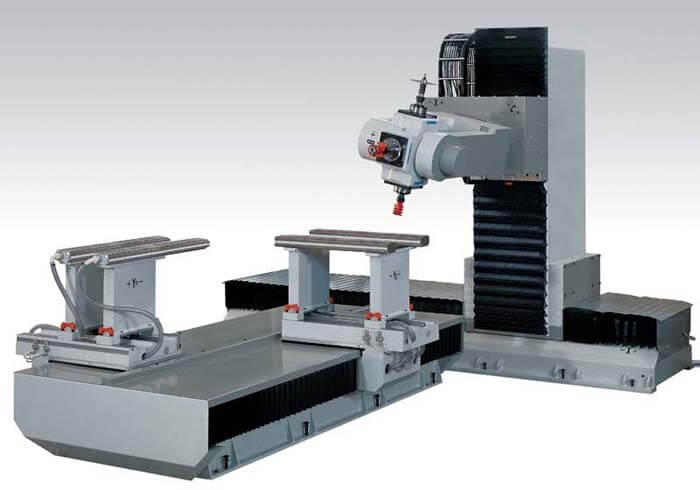6 Axis CNC, the Ultimate Guide
Updated: Feb. 26, 2024
Being highly versatile pieces of machinery, computer numerical control (CNC) centers are often modified to suit any manufacturer’s needs and produce the most complex components. One of the most advanced types of CNC machines is 6-axis ones, enabling the turning of a cutting tool along multiple axes.
It is often difficult to distinguish the particularities of specifically 6-axis CNC centers, which may belong to mills, lathe, routers, or others. It deteriorates the understanding and forces even specialists to make unnational decisions while advising to purchase a machine. This guide for 6-axis CNC machines will explain the concept of multiple-axis centers, outline their benefits and limitations and compare them to other automated machines.
1. What is a 6 Axis CNC?
A 6-axis automated center is referred to as a machine having three additional (besides 3 basic) axes which may be either linear movement or rotation ones. The number of axes determines the type of work that can be performed, detailing level, speed of machining, and how a workpiece’s location is manipulated.
It is more efficient from the perspective of shaping a detail when any distance from a component to a spindle and any angle are ensured. It also enables conducting multiple perfectly synchronized actions at the same time.
A 6-axis CNC center enables multiple operations in a single machine with improved precisions and reduced manufacture time.
2. Benefits of a 6 Axis CNC Machine
Several significant benefits of 6-axis CNC centers compared to more basic ones can be outlined.
- Increased productivity. 6-axis CNC machines perform operations 4-times faster than even their closest competitors – 5-axis center. It is achieved due to specific tool movement and transition.
- Enhanced efficiency. Advanced CNC machines offer better control, acceleration, deceleration, and smoother motor performance. It enables better surface finishes and higher rates of cutting.
- Versatility. 6-axis CNC centers enable to carry out milling, facing, drilling, and turning in a single machine unit, which basic automated tools are not capable of offering.
Advanced CNC centers with additional axes are more effective, precise, and adaptable to manufacturing needs than their basic versions.
3. What are the 6 Axis on a CNC Machine?
To answer this question it is possible to explain how CNC machines evolved from 3 to 6-axis versions. The simplified image of a 6-axis CNC with its moving parts and their motion types indicated is shown in the image below.

Thus, 3-axis CNC machines enable the removal of material in three axes which are X, Y, and Z, or in other words, back to front, side to side, and up and down dimensions respectively. 4-axis CNC machine has an added axis of rotation (shown as Ω -axis in the image above). 5-axis machining involves H-dimension enabling delivery of precise and intricate components. Finally, the most advanced version among discussed ones has ψ-axis facilitating arduous tasks.
4. 6 Axis vs 3,4,5 Axis CNC Machines
Every more complex CNC machine differs from its basic version with a lower number of axis in the matter of the movement’s intricacy. It implies the way both a cutting tool and a workpiece can move in relation to each other, producing complicated designs.
The other determinant is the specific requirement to a component produced. 3-axis machines are not capable of manufacturing parts that demand unparalleled precision; thus, 5 or 6-axis machines are needed. Simultaneously, the greater number of axes enables faster production of similar components.
5. What are 6 Axis CNC Routers Used For?
To begin with, it is necessary to describe CNC routers as automated machines intended for particular purposes. Thus, a router has a stationary workpiece, which may be either fixed or mounted. A machine’s cutting tools placed into spindles move in the 3 or more axes. Routers are designed for large parts intended to be cut from sheet materials. Types of materials CNC routers can work with include but are not limited to woods, composites, metals, glass, plastic, and even foams.
Advanced CNC routers with 6 axes are mostly benefited from the added dimensions. An example of a 6-axis router can be seen in the image below.

Such pieces of machinery are similar to others, especially to milling machines, but have more differences than just the method of a workpiece arranging on a worktable. Being designed for lighter materials, routers are less in their gross weight, operate faster, but not as accurately as other CNC centers. Having additional axes enables them to create more intricate designs and combine distinct operations.
6. Limitations of a 6 Axis CNC machine
Even the top-rate automated centers are not deprived of some limitations that should be closely considered.
- In the case a high volume of components with complex designs are not constantly needed, purchasing a 6-axis CNC machine is not financially rational.
- 6-axis CNC machines are more difficult in maintenance and their pre-programming and tooling adjustment is even more complex.
The disadvantages of advanced CNC machines are a natural reflection of their usefulness for the high-volume production of components. It may be recommended for smaller manufacturers to consider purchasing centers that have up to 5-axis.
7. Summary
6-axis CNC machines are the advanced versions of 3, 4, or 5-axis ones. They are intended for more complex components than basic versions and can operate 4-times faster than even 5-axis centers.
As an instance of a 6-axis CNC machine, an automated router can combine multiple operations while producing high volumes of complex parts. However, first-rate machines are difficult in maintenance, preparations for manufacturing, and require a higher amount of financial capital, which may not be fully exploited by companies working on small scale production orders.